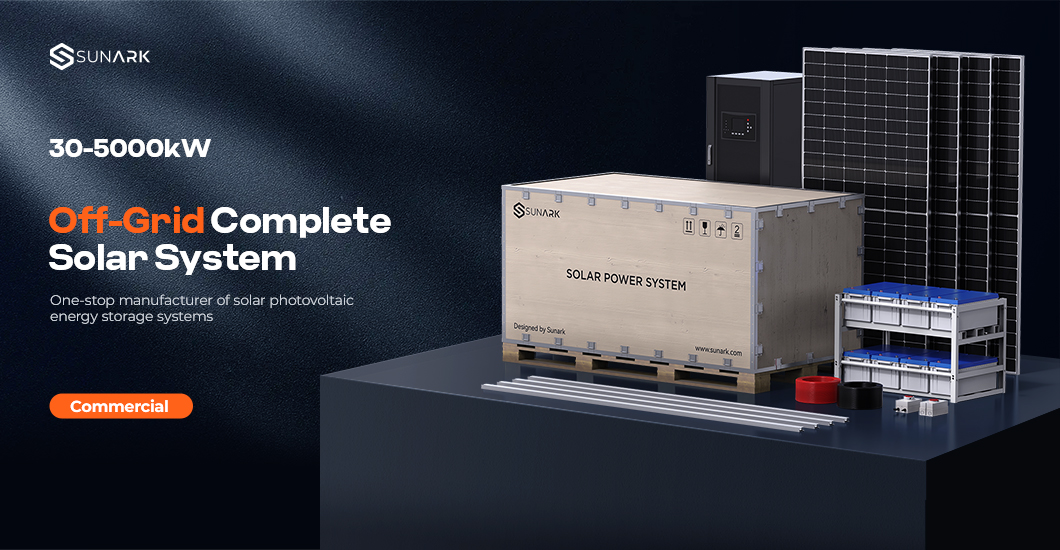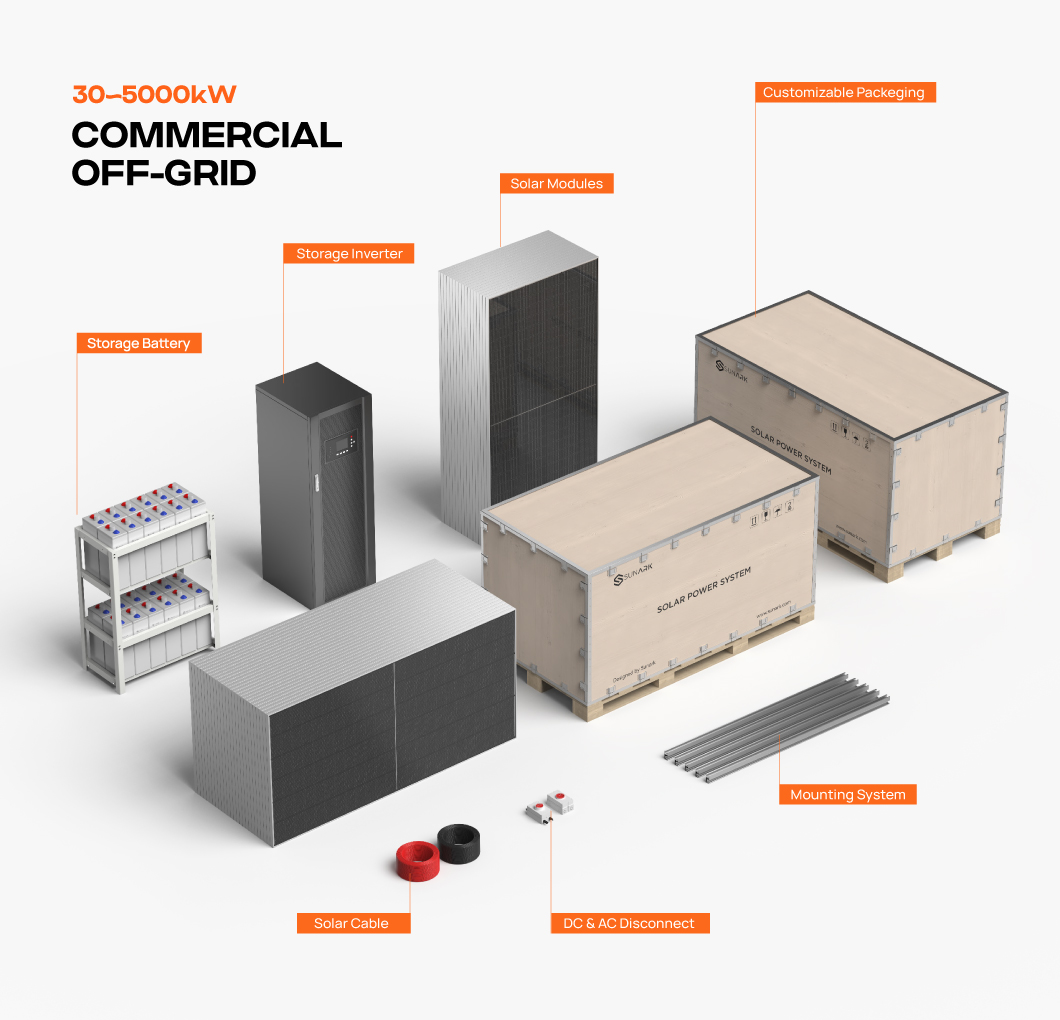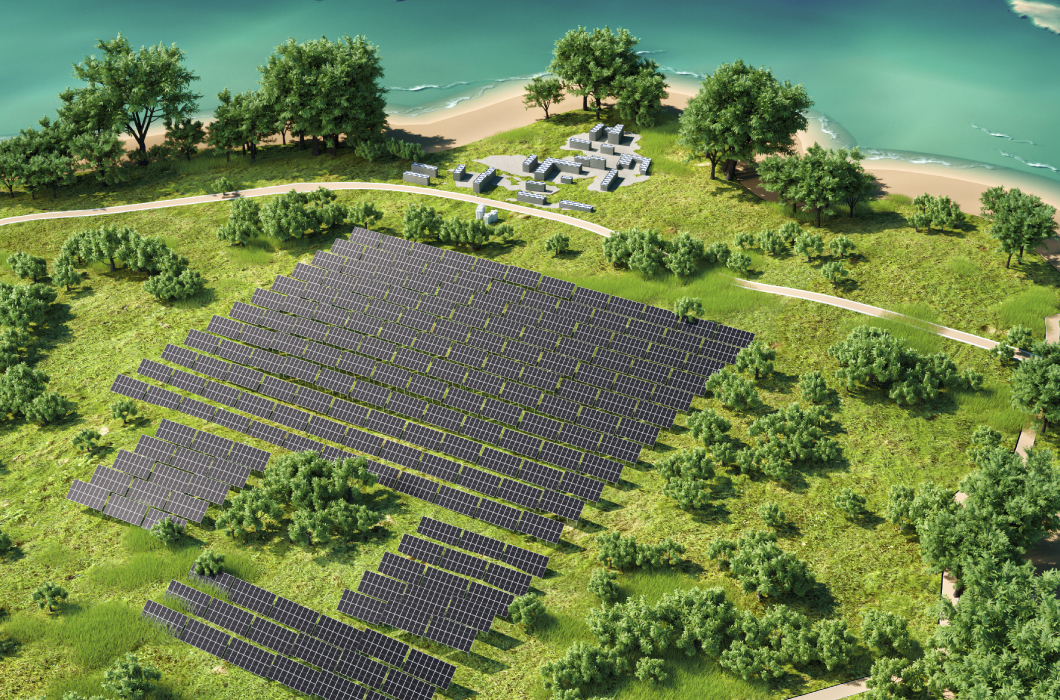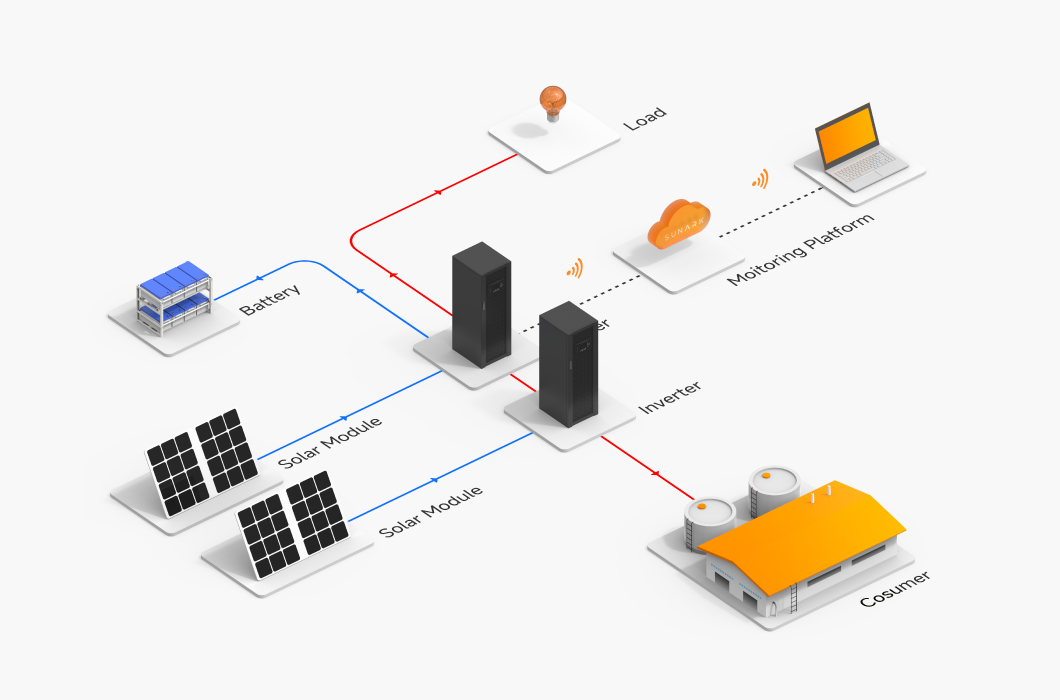An Commercial off-grid solar system, also known as a stand-alone or standalone solar system, is a setup that generates electricity from solar energy and stores it in batteries for use when needed. It is designed to operate independently from the electrical grid, providing power in remote locations or areas with unreliable or no access to the utility grid.
MODEL:
SE30-5000KW-OFFPV MODULE:
550WINVERTER POWER:
30-5000KWBATTERY BANK:
30-10000KWHMOUNTINGS:
CustomizedAPPLICATION:
Roof and GroundOEM:
Supported
There are several utilities and advantages of off-grid solar systems:
Energy Independence: Off-grid solar systems provide energy independence by producing electricity directly from the sun. This eliminates the reliance on the utility grid and reduces dependence on fossil fuels for power generation.
Remote Power Generation: Off-grid solar systems are particularly useful in remote areas where connecting to the electrical grid is impractical or expensive. They can provide power to cabins, off-grid homes, campsites, or any location far away from traditional power infrastructure.
Cost Savings: While the initial investment in an off-grid solar system can be significant, it can lead to long-term cost savings. Once installed and operational, solar power is essentially free, as it relies solely on sunlight. Additionally, by reducing or eliminating the need for diesel generators or other backup power sources, off-grid solar systems can significantly reduce ongoing fuel and maintenance costs.
Environmental Benefits: Off-grid solar systems are a clean and renewable energy solution. By harnessing the power of the sun, they produce electricity without emitting greenhouse gases, contributing to air pollution, or depleting finite resources. They are a sustainable alternative to traditional fossil fuel-based power generation.
Reliability and Resilience: Off-grid solar systems can provide reliable power, even in areas prone to frequent power outages. By combining solar panels with battery storage, they can store excess energy during the day and use it during the night or during periods of low sunlight. This ensures a constant power supply for essential appliances and equipment.
Scalability: Off-grid solar systems are scalable, meaning you can design a system that meets your specific power requirements. You can start small and expand the system as needed by adding more solar panels, batteries, or other components. This flexibility allows you to customize the system based on your energy needs and budget.
Reduced Environmental Impact: Off-grid solar systems help reduce the carbon footprint and environmental impact associated with traditional energy generation. By relying on clean and renewable solar power, they contribute to combating climate change and promoting sustainable development.

Here's a proposal for an off-grid solar system that can provide electricity independently from the utility grid:
System Overview:
The off-grid solar system will consist of the following components: solar panels, charge controller, battery bank, inverter, and a backup generator (optional).
Solar Panels:
Select high-efficiency solar panels with a capacity that meets your energy requirements. Consider factors such as available roof space, sun exposure, and average daily energy consumption. Monocrystalline or polycrystalline panels are commonly used for off-grid systems.
Charge Controller:
Choose a suitable charge controller to regulate the flow of electricity from the solar panels to the battery bank. A charge controller protects the batteries from overcharging, optimizes charging efficiency, and ensures maximum battery performance and lifespan. MPPT (Maximum Power Point Tracking) charge controllers are recommended for better energy harvesting.
Battery Bank:
Install deep-cycle batteries to store the energy generated by the solar panels. Deep-cycle batteries are designed for frequent cycling (charging and discharging) and provide sustained power over an extended period. Calculate the battery capacity based on your daily energy consumption and desired autonomy (number of days the system can operate without sunlight).
Inverter:
An inverter converts the DC (direct current) electricity stored in the batteries into AC (alternating current) electricity for use in your household appliances. Select an inverter that can handle the peak load and surge requirements of your appliances. Pure sine wave inverters are recommended for powering sensitive electronics.
Backup Generator:
Consider adding a backup generator to provide power during extended periods of low sunlight or high energy demands. Choose a generator that is compatible with your system's voltage and power requirements. It can be fueled by diesel, gasoline, propane, or other renewable fuels depending on your preferences and availability.

System Monitoring and Control:
Install a monitoring system that allows you to track the performance of your solar array, battery status, and energy consumption. This system can provide real-time data and alerts to help you optimize your energy usage and plan maintenance if needed.
Installation and Maintenance:
Engage a professional solar installation company or an experienced contractor to install the system correctly and ensure compliance with local regulations and codes. Regular maintenance, including cleaning the solar panels, checking battery electrolyte levels (if applicable), and inspecting connections, is essential for optimal system performance.
Financial Considerations:
Calculate the cost of the system, including equipment, installation, and ongoing maintenance. Assess the return on investment (ROI) based on your energy savings over the expected lifespan of the system. Explore available incentives such as tax credits, grants, or rebates for renewable energy installations.
Remember to consult with local experts, obtain necessary permits, and comply with applicable regulations before proceeding with the installation of an off-grid solar system.

People choose solar systems over diesel generators for several reasons:
Renewable Energy: Solar power is a clean, renewable energy source that relies on sunlight, which is abundant and free. Unlike a diesel generator, which requires fuel (typically diesel or gasoline) to operate and emits pollutants, solar systems generate electricity without relying on non-renewable resources or producing harmful emissions.
Cost Savings: While the initial cost of installing a solar system can be higher compared to a diesel generator, solar systems have lower operating costs in the long run. Once installed, solar systems generate electricity at no additional cost, whereas diesel generators require ongoing fuel purchases. Over time, the savings on fuel costs can offset the initial investment.
Environmental Impact: Solar power is a sustainable energy solution that contributes to reducing greenhouse gas emissions and combating climate change. Diesel generators, on the other hand, release carbon dioxide (CO2), nitrogen oxides (NOx), sulfur dioxide (SO2), and particulate matter into the atmosphere, contributing to air pollution and environmental degradation.
Noise and Maintenance: Diesel generators are typically noisy and require regular maintenance, including fuel refills, oil changes, and filter replacements. Solar systems, on the other hand, operate silently and have minimal maintenance requirements. With no moving parts, solar panels are durable and can last for decades with proper care.
Grid Independence: Solar systems allow homeowners to become more self-sufficient by generating their own electricity. This reduces dependence on the electrical grid and provides a reliable source of power
FAQs:
Q1: Do you support OEM/ODM?
A:Definitely, OEM&ODM service is supported with a certain quantity,including customize logo,package and label;
Q2: What's the production time?
A: The production time is normally 15 working days. but we will always prepare some stocks for popular models.
Q3: Can you provide DDP service?
A:Yes, if you are a personal customer and don't want to deal with the customs, we can provide DDP service to your address.
Q4: What about the warranty and how to claim?
A: Warranty period are 10 years since you receive the product, our professional after-sales team will deal with all warranty issues.